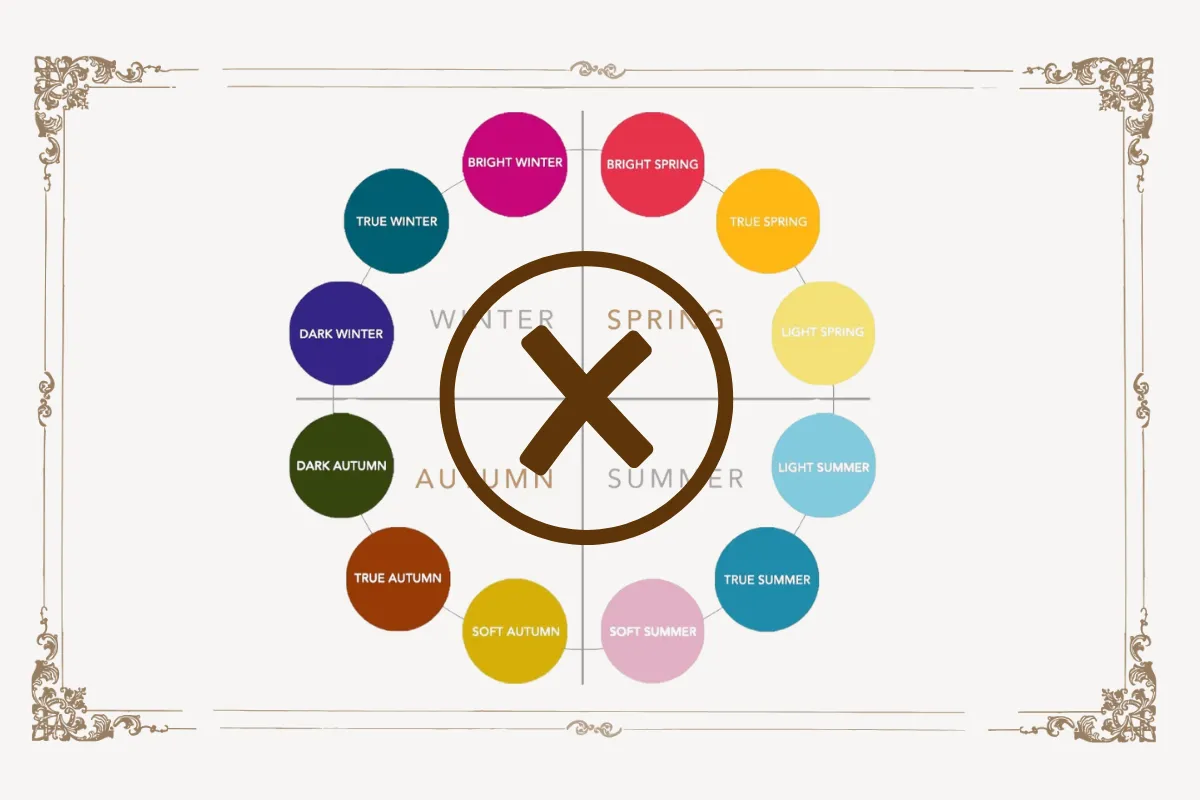
SEASONAL ANALYSIS NOT SCIENCE-BASED: 6 REASONS
An Outdated System That Is Not Based On Science
The seasonal color analysis, also known as the color me beautiful or color analysis system, was developed in the 1970s by a few individuals, with Carole Jackson being one of the key figures associated with popularizing this concept.
Carole Jackson wrote the influential book "Color Me Beautiful," which was published in 1980 and played a significant role in popularizing the concept of seasonal color analysis.
Carole Jackson's system categorized individuals into four main color seasons:
Spring:
People with warm undertones and light, bright features.
Summer:
People with cool undertones and light, delicate features.
Autumn:
People with warm undertones and deeper, earthier features.
Winter:
People with cool undertones and striking, contrasting features.
Each of these seasons was associated with specific color palettes that were believed to complement an individual's natural coloring.
The system was based on the idea that wearing colors that harmonize with one's skin, hair, and eye colors can enhance one's appearance.
While Carole Jackson's book and system were influential, it's worth noting that the concept of analyzing how colors interact with an individual's natural features has been explored by various individuals and cultures throughout history.
And it is the only way of finding your true color type.
6 Reasons Why This System Is Not Based On Science
1 Subjectivity
The classification of individuals into seasonal categories is based on personal observations and subjective assessments made by stylists or individuals conducting the analysis.
There are no standardized, objective criteria for categorization. This practice stems from a time (the 70s) when we didn´t know much about skin colors and the science of color.
2 Limited Scientific Research
There is limited scientific research that supports the specific claims of the seasonal color analysis system.
While color psychology and color theory are studied fields, they do not directly align with the specific color classifications used in this system.
3 Variability in Human Appearance
Human appearance is highly variable, and factors such as lighting, settings, and personal preferences can significantly influence how colors appear on an individual.
This variability is challenging to categorize within the seasonal analysis.
4 Lack of Consensus
There is no universal agreement among stylists or experts on the exact definitions of the seasonal color categories or the color palettes associated with them.
Different practitioners use different criteria and methodologies.
5 Changing Beauty Standards
Beauty standards evolve over time and across cultures.
The seasonal color analysis system is based on a specific set of assumptions about what colors are flattering, which do not align with current or future beauty trends.
6 Complexity of Human Coloration
Human coloration is multifaceted and cannot be reduced to simple categories.
Factors such as eye color, hair color, skin tone, and personal style preferences all play a role in determining what colors may or may not be flattering for you.
. . .
Love To Explore More About What You Can Use Instead of the Seasonal Analysis?
Join The Art of Radiance Community Group to discover who you are beneath the fabric and unlock your unique radiance.
Limited Seats!
*eR 🌸
